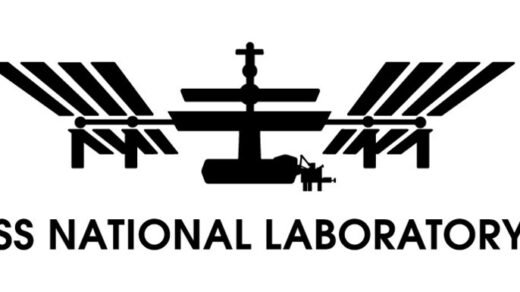The Future of Space Exploration
Summary: In space exploration, the tandem of humans and robots is proving to be more potent than either going at it alone. This article delves into the symbiotic relationship between astronauts and robotic technology as they prepare to uncover the mysteries of space together. Their collaboration is poised to enhance the safety and efficiency of missions beyond Earth, blurring the lines between human intuition and artificial capability.
In space exploration, partnerships are not limited to human teamwork; a crucial alliance is forming between astronauts and robots. This fusion of human ingenuity and robotic precision is redefining roles, as robots equipped with advanced artificial intelligence (AI) systems assist astronauts in extraterrestrial endeavors.
Comparing self-driving cars on Earth to robots in space reveals how AI could empower astronauts to tackle the challenges of unknown and hazardous planetary surfaces. Advances in sensors and machine learning allow robots to perceive, analyze, and navigate space terrains, offering a dynamic support system for human explorers.
Health monitoring is another frontier where robots are stepping in. Utilizing technologies similar to Earthly devices, spacefaring robots can constantly oversee astronauts’ health, mitigating the physical and mental demands of space voyages. Moreover, the idea of robots performing surgery in orbit transforms science fiction into a tangible vision, ensuring astronauts receive top-notch medical care far from Earth.
While robotic rovers forge paths on Mars, hinting at the shape of future manned missions, it is the inherent human traits—creativity, adaptability, and resourcefulness—that complement robotic functions. Therefore, despite their advanced capabilities, robots are intended to augment, not replace, human beings in space.
As this partnership matures, we anticipate robots that not only understand but can respond to the social dynamics of human interaction. This evolving relationship promises a cohesive exploration team ready to conquer the universe’s secrets, illustrating a commitment to human progress and the relentless pursuit of knowledge in the cosmos.
Human-Robot Collaboration in Space Exploration
Space exploration is undergoing a transformative evolution with the advent of advanced robotics and artificial intelligence (AI), creating a symbiotic relationship between astronauts and technology. This partnership is enhancing the capabilities of space missions, pushing the boundaries of what is possible when human intuition is coupled with artificial capabilities.
Industry Perspective and Market Forecasts
The space industry is currently witnessing significant investments in robotic technology to support human spaceflight. Companies such as SpaceX and Blue Origin are developing systems that not only transport humans to space but also utilize robots for tasks like maintenance and cargo management. The global space robotics market is expected to experience robust growth in the coming years. Analysts predict a compound annual growth rate (CAGR) that reflects the surging interest in both commercial and governmental sectors to invest in space automation and robotics.
Advances in robotics are crucial for missions aiming for deeper space exploration, such as NASA’s Artemis program, which will rely heavily on robotic systems for tasks ranging from habitat construction to scientific research. Collaborative robots will play an essential role in assisting astronauts with complex operations on the lunar surface, which can lead to innovative breakthroughs in how we approach living and working in space.
Challenges and Issues
Despite the optimism, the integration of robots in space presents its share of challenges. The extreme conditions of space, such as radiation, vacuum, and temperature fluctuations, demand highly reliable and resilient systems. AI and robotics must be designed to withstand these conditions while providing consistent support to astronauts.
There is also the monumental task of creating AI systems that can seamlessly interact with humans in a dynamic and unpredictable environment. As robots become more autonomous and capable, ensuring safe human-robot interactions is imperative. This includes addressing concerns about over-reliance on technology, which might lead to skills degradation among astronauts.
Moreover, from an ethical standpoint, the use of AI in space raises important considerations regarding the decision-making power allotted to machines, especially in life-critical situations. It is essential to design AI systems that adhere to ethical guidelines and prioritize human safety and decision-making autonomy.
While the industry faces these challenges, there is no denying the potential benefits of human-robot collaboration. The relationship between astronauts and robotic counterparts is poised to unlock new possibilities in space exploration, ranging from establishing permanent lunar bases to eventual human missions to Mars and beyond. The pursuit of these ambitious goals will require continuous innovation, fostering a market that nurtures technological advances and addresses the intricate balance between human needs and robotic capabilities.
This is an exciting era for space exploration. The collaborative efforts between astronauts and robots hold the promise of revealing more about our universe and securing humanity’s role as an interplanetary species. As we move forward, it’s evident that this alliance will remain a cornerstone in overcoming the obstacles of space exploration and expanding our horizons to new worlds.

Jerzy Lewandowski, a visionary in the realm of virtual reality and augmented reality technologies, has made significant contributions to the field with his pioneering research and innovative designs. His work primarily focuses on enhancing user experience and interaction within virtual environments, pushing the boundaries of immersive technology. Lewandowski’s groundbreaking projects have gained recognition for their ability to merge the digital and physical worlds, offering new possibilities in gaming, education, and professional training. His expertise and forward-thinking approach mark him as a key influencer in shaping the future of virtual and augmented reality applications.



